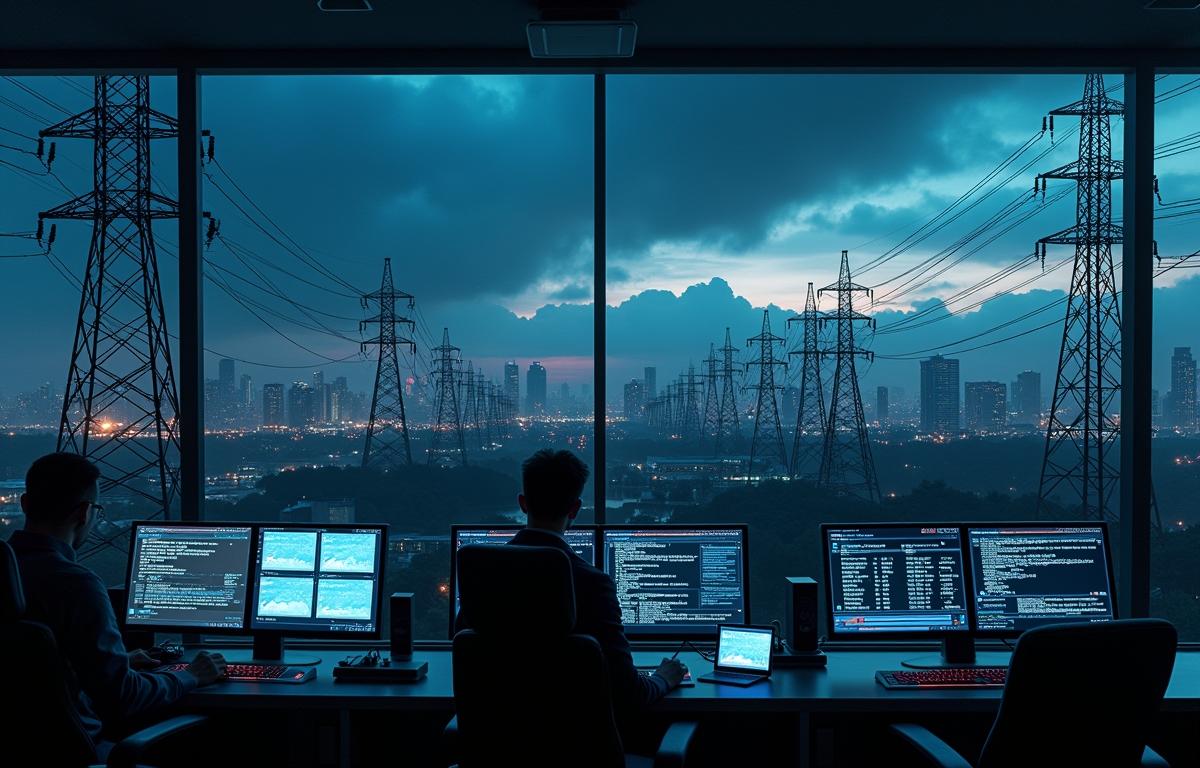Governments, businesses, and communities worldwide are increasingly concerned about cyberattacks causing power failures. People rely heavily on electricity for practically everything, from communication networks to healthcare services. When digital threats compromise a nation’s energy infrastructure, the consequences can spread far beyond a simple power outage. Sudden disruptions undermine public trust, cause financial upheaval, and potentially threaten lives. The root causes often trace back to vulnerabilities within complex networks that integrate older equipment with advanced software systems.
Digital assaults on utility companies continue to rise in both frequency and sophistication. Attackers look for any opening outdated hardware, unpatched software, or even employees unaware of social engineering tricks. The emergence of smart grids, remote monitoring tools, and interconnected devices has brought efficiency and convenience, but also opened new avenues for infiltration. To appreciate the gravity of these scenarios, it’s worthwhile to examine where and how cyber threats converge with daily energy demands.
The Growing Threat to Electrical Grids
Criminal groups and even state-sponsored entities have recognized that power grids make attractive targets. In some cases, these infrastructures are viewed as symbols of national power and stability, so taking them down garners significant attention. Strains on legacy systems and interconnected technologies leave critical systems vulnerable in ways never imagined decades ago.
Even the most modern grids can harbor weak points, especially when hackers employ stealth approaches. By testing small sections of a network or planting malicious code in standby systems, attackers might remain undetected for months. When they finally exploit a critical flaw, the disruption can spread across entire cities.
Subtle Weak Points in Modern Infrastructure
Many energy providers have adopted industrial control systems and automation tools to streamline operations. These tools are indispensable, but they also create entryways if not patched or monitored regularly. Firewalls and encryption might be in place, yet misconfigurations or unnoticed loopholes can nullify these defenses.
Sometimes, service disruptions occur because smaller vendors or contractors fall victim to ransomware or malware, inadvertently offering a route to bigger targets. Steps like network segmentation and frequent software updates help, yet attackers stay persistent. They rely on the fact that inconsistent security practices among partners can make a well-guarded network only as strong as its weakest link.
The Importance of Power Grid Security
Defending critical power grid security requires collaboration from multiple stakeholders. Government agencies, private organizations, and security experts must form steady lines of communication. This ensures that attempts to sabotage vital systems get spotted and neutralized before they escalate.
Well-structured contingency plans also prevent confusion when something does go wrong. Frequent drills and real-time monitoring offer staff a chance to sharpen their responses, so minor flaws don’t balloon into regional blackouts. In essence, building and maintaining trust in electricity services means layering robust defenses at every intersection of the grid.
The Impact on Everyday Life
Even brief blackouts can trigger major inconveniences, yet wide-scale power failures magnify damage in startling ways. Hospitals rely on energy for life-saving machinery, while grocery stores depend on refrigeration for food safety. Credit card transactions stop working without power, bringing retail and banking services to a standstill. If a cyber assault halts production, it disrupts entire supply chains, setting off waves of financial and social turmoil.
Communication networks also bear the fallout. Cell towers require a continuous power supply, and internet access is essential for emergency coordination. When electricity is compromised, consistent access to critical information can erode, pushing citizens into panic. Cyberattacks in power failures can destabilize the very fabric of modern civilization, illustrating why immediate and resilient safeguards are vital.
Strains on Public Services
Law enforcement agencies and emergency response teams lose valuable time if dispatch systems go down. Traffic management relies on signals and sensors that keep vehicles moving, and any sustained outage leads to chaos on roadways. Water treatment plants also depend on electricity for purification processes, so a prolonged failure can affect water quality and distribution.
When outages stretch for days, economic activity stalls and trust in public utilities declines. This creates an ironic situation: the more societies integrate high-tech solutions, the more vulnerable they become to calculated digital sabotage. As a result, ensuring power grid security stands central to preserving everyday life in an increasingly connected world.
Evolving Tactics Hackers Use
Attackers adapt quickly, often employing methods that blend social engineering with sophisticated malware. Phishing campaigns trick employees into revealing credentials, while advanced viruses can manipulate or erase system logs to hide tracks. These subtle maneuvers allow malicious actors to move laterally within a network before striking targets that yield the highest impact.
With the rise in cloud services and remote work, hackers exploit weak connections between personal devices and corporate networks. Multi-factor authentication helps, but it’s not foolproof. The best defense involves ongoing security assessments, staff training, and a willingness to examine each part of the supply chain for blind spots.
Shifting Attack Vectors
In years past, hackers often favored direct denial-of-service attacks to overwhelm servers. Now, many opt for covert infiltration into operating systems, giving them control at a granular level. This stealth approach accomplishes more lasting damage, since it’s not always obvious when sub-systems or backup generators are compromised.
Physical infiltration tactics have also emerged, where malicious insiders place hardware keyloggers or tampered devices on secure networks. Once inside, new ranks of malware can systematically target essential services. Recognizing these varied strategies is the first step in adapting defenses and refining real-time monitoring processes.
Proactive Measures and Emerging Technologies
Developing fully resilient energy systems requires adopting proactive approaches. Early detection rapidly reduces the time hackers have to pivot or exfiltrate data. Real-time analytics and automated alerts can catch anomalies, such as unexpected drops in frequency or voltage. Intrusion detection tools, supplemented by artificial intelligence, identify behavior patterns that deviate from the norm.
Some utility providers have begun isolating high-risk aspects of the grid with strict network segmentation. This means if one node fails or is attacked, it doesn’t poison the entire system. Additionally, encryption at every layer, enhanced authentication protocols, and continuous security awareness training form the foundation of modern grid security strategies.
The Role of AI and Machine Learning
Artificial intelligence tools now play an integral role, sifting through massive data logs to find suspicious activities. Machine learning algorithms adapt over time, spotting advanced threats that might evade older detection methods. While these tools promise a more robust shield, they also need smart human oversight. Overreliance on AI without routine checks can introduce fresh vulnerabilities if an attacker learns how to manipulate the underlying models.
The Way Forward for Secure Energy Systems
As power grids embrace digitization, coordinated efforts across government bodies and private industries become indispensable. Cyber drills, standard enforcement, and cross-sector data sharing help close the knowledge gap that hackers exploit. If one utility detects a new strain of malware, communicating that threat to others can prevent similar attacks elsewhere.
Yet even the most carefully planned defenses can falter when budgets get slashed or cybersecurity protocols become outdated. Leaders must see these investments as non-negotiable parts of modern infrastructure. The threat evolves, the technology expands, and adversaries grow bolder. Continuous innovation in grid security stands as a crucial lifeline for every region that depends on stable electricity access.
Resilience emerges through a blend of technology, policy, and human expertise. Utility providers can’t reduce their exposure unless they work with software vendors, hardware manufacturers, and security analysts who understand the stakes. Each step boosts the collective immunity of energy systems against malicious interference. Taking these preventative measures seriously may be the difference between a safe, functioning community and a sudden plunge into darkness.



